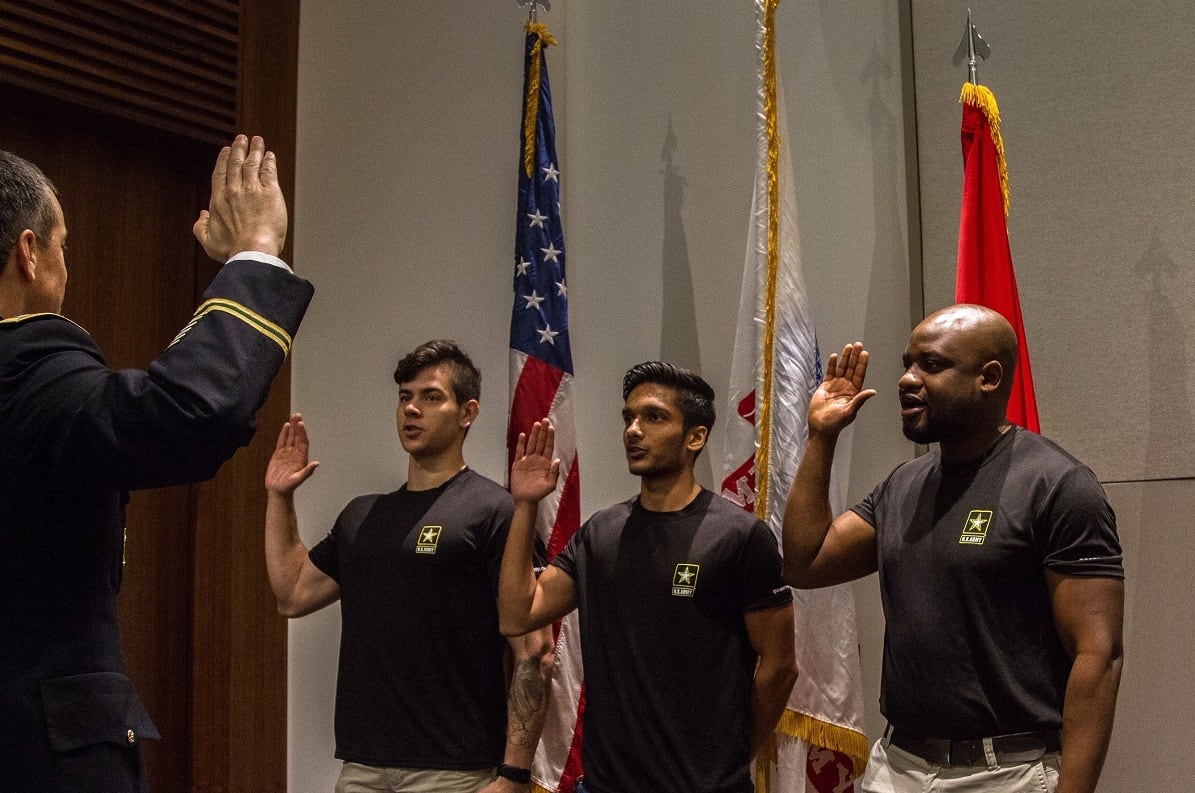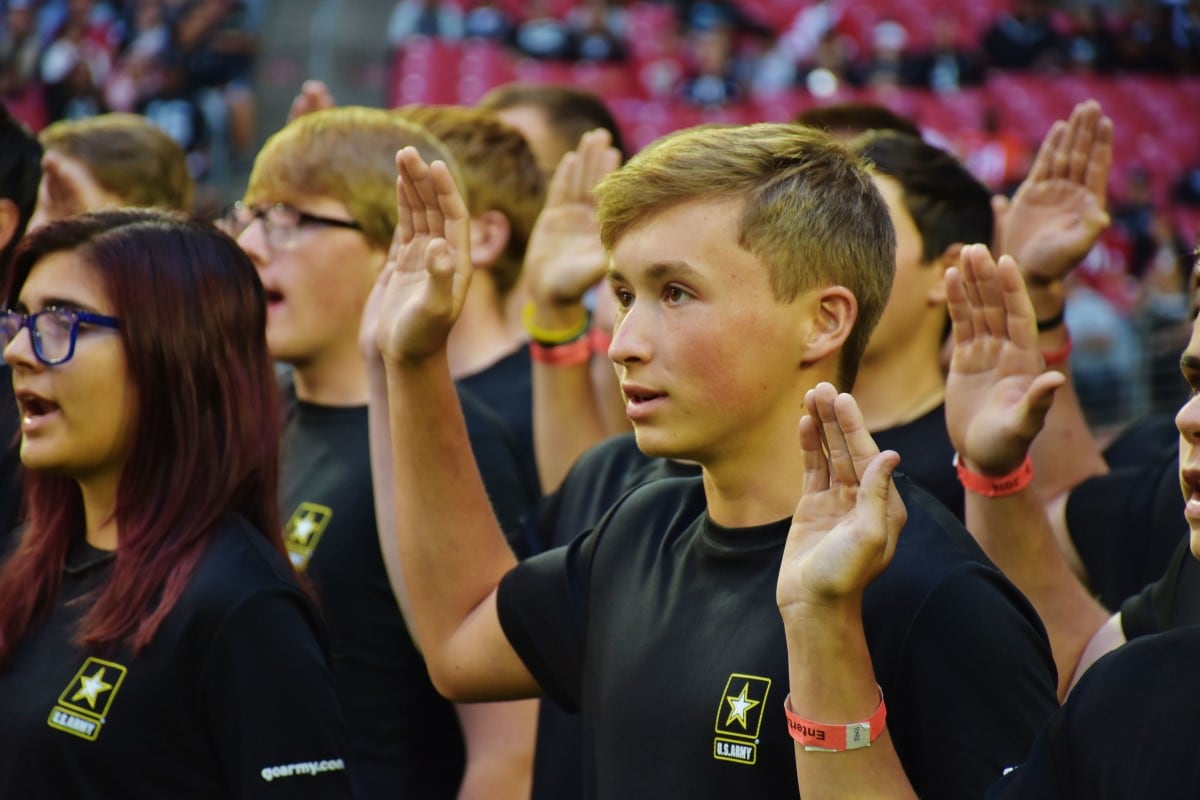The Army’s social media accounts and recruiting website aren’t just a way to connect with potential soldiers, it’s also a testing ground that offers more ways to learn about different audiences and their reactions to specific types of content, according to an Army-sponsored study.
The study looked at the Army Marketing and Research Group’s website GoArmy.com, as well as its Facebook and Twitter accounts, in an effort to figure out who is using the pages and whether they are helpful for recruiting efforts.
The number of visitors to these pages is positively correlated with recruiting contracts, but the relationship is very small, according to the study by Rand Corporation’s Arroyo Center and sponsored by the Assistant Secretary of the Army for Manpower and Reserve Affairs.
But the comments on social media posts and the visitors to website pages can help the Army determine what different audiences want to see.
The Army’s website, for instance, should be focused on outreach to areas with diverse populations, its Twitter account should post more about service values rather than career information and the Army’s Facebook page could be used to foster a positive image of an Army career for veterans and current service members who are in a position to influence potential recruits, according to the Rand study.
Target web traffic to diverse groups
GoArmy.com appears to be giving the Army the best return on investment in recruiting, which makes sense based on the multiple webpages available for users to browse, according to the research. Between July 2014 and July 2016, more than 150 million total pages were viewed on the website and more than 40 million sessions were logged by the study.
Still, a regression analysis conducted by researchers found that most of the visitors to GoArmy.com do not subsequently sign a contract with the Army.
One potential explanation the researchers noted for this was that the website is designed to serve both potential recruits and current soldiers. Many visitors came to the website looking for specific information, such as pay charts, policies relevant to reservists, Reserve Officers’ Training Corps scholarships, or “green to gold” information.

What the study did find was that “those living in the most populated areas and in areas with higher proportions of minority groups and immigrants appear to use GoArmy.com more intensively than others” and “contracts are also higher in areas with more immigrants and more ethnic minorities.”
This means that simply increasing web traffic won’t help the Army reach its recruiting goals, but dialing into areas with diverse populations would bring the service more bang for its buck.
Tweet about Army history and sports
With Twitter, the service’s @GoArmy account was found to be a good source for building awareness of Army culture, but the platform is less effective in producing contracts.
Currently, the content originating from the Twitter account is focused on careers and the Army at large. There’s not much posted by the account that deals with Army sports or history, but that was actually the area that the study found Twitter users most commonly retweeted and interacted with.
Content that the Army’s Twitter account posts dealing with sports, such as the Army Bowl or various marathons, constitutes a large portion of the account’s “mentions.” Historical events involving the Army, such as the D-Day invasion or famous veterans, are prominent in retweeted content, researchers found.
“This indicates a connection between the @GoArmy account and the national discussion of military service, particularly through the @GoArmy posts that were retweeted,” Rand researchers wrote. “These findings may be potentially useful for designing future marketing campaigns. Note also that most posts were not retweeted a significant number of times.”
Facebook users sometimes get angry
Finally, GoArmy’s Facebook page has an audience made up of the general public, soldiers, veterans, military families and potential recruits. The wide range of users are highly engaged with the page, researchers said.
Between January 2014 and October 2016, the GoArmy Facebook page hosted 4,805 posts, averaging just under five posts per day. The average post was served to 464,522 unique users. The account had 1.1 million followers at the time, and the median post received 1,396 likes, 24 comments and was shared 80 times.
Because there are Facebook users on the GoArmy page who are non-military, there is recruiting potential from the page. However, a lot of the posts on it were found to be in need of cultural translation.

“The Army has a complex culture that can be very inaccessible to nonmilitary audiences. This can lead to [Army Marketing and Research Group] posts that do not make sense to a nonmilitary audience," researchers wrote.
Additionally, there were audience members on the GoArmy page who easily become outraged, the study found. Social media posts in general were noted to be vulnerable to “a particular kind of activity in which audience members become outraged over perceived deviations from Army regulations and drag conversations on such posts down into arguments,” the report stated.
Still, the Facebook page was found to be particularly useful for influencing future recruits through military family networks, current service members and veterans who remain active on the page and could serve to connect youth populations with the idea of Army service.
Rand recommended that the Army gain a better understanding of its audiences using its different communication channels and work to build the follower base that interacts on those channels. Rand also said the Army should develop new metrics to measure communication effectiveness and explore social media data as a measure of audience reactions to Army-relevant information.
Kyle Rempfer was an editor and reporter who has covered combat operations, criminal cases, foreign military assistance and training accidents. Before entering journalism, Kyle served in U.S. Air Force Special Tactics and deployed in 2014 to Paktika Province, Afghanistan, and Baghdad, Iraq.




